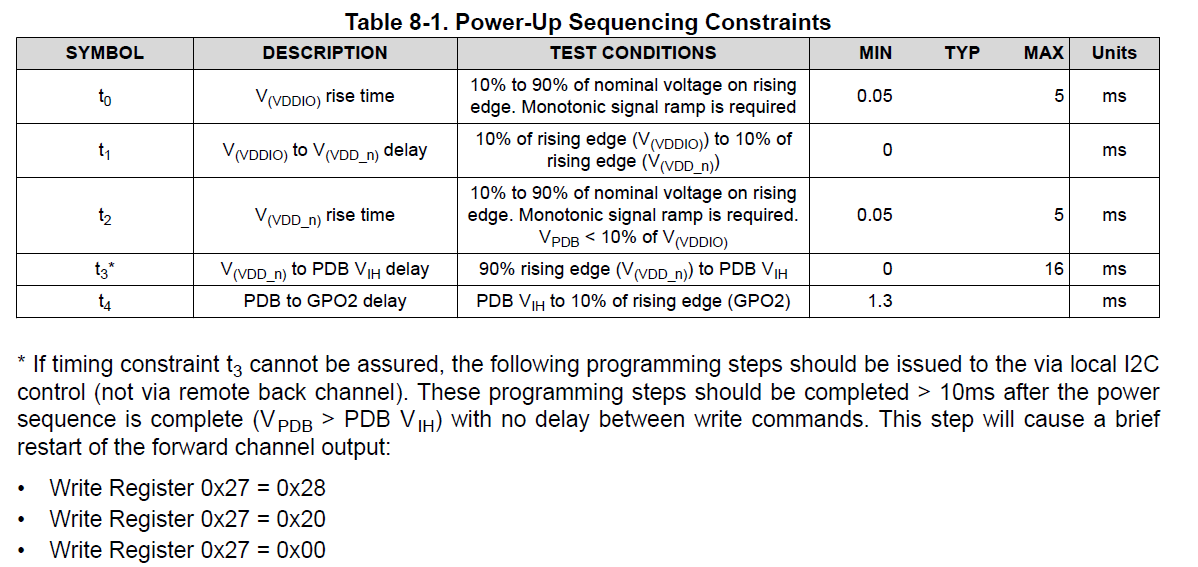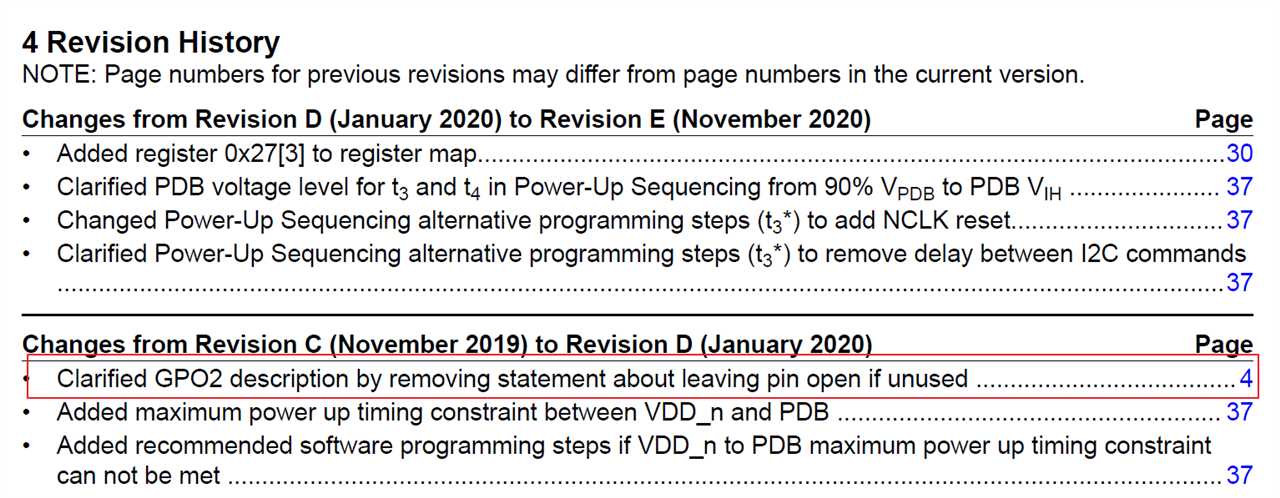Dear team,
My customer uses our 933 in their ECU board. They are doing the low temperature aging test recently. After one hour aging test, they will restart the board, but they find that one board will appear black screen accidentally. When the fault appears, 0x0c=0x17 while 0x0c=0x15 under normal mode. If we pull PDB pin to low level and then back to high level, the fault will disappear. Could you please help analyze this phenomenon? In addition, 0x0c bit[1]=1 means DES error. Could you please tell me under what circumstances will cause DES Error?
Thanks & Best Regards,
Sherry




